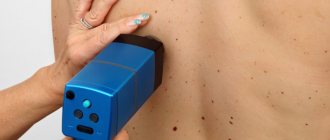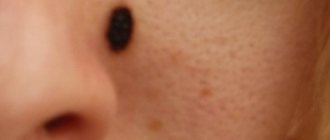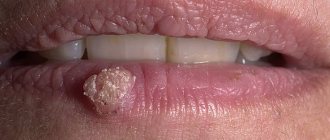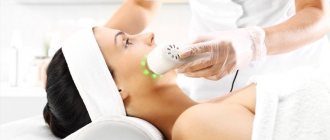People of all ages face problems that require the intervention of a medical specialist for health reasons or for aesthetic reasons. One of the reasons for visiting a medical clinic is the removal of moles using electrocoagulation. This method is used in cosmetology and medicine, as it has low trauma and a short rehabilitation period. Otherwise it is also called - removal of moles with an electric knife. The procedure requires sterility, so it is carried out only in medical institutions.
Removal of moles by electrocoagulation in our clinic
Our medical center, along with others, uses this method of treatment, since cauterization of moles with an electric knife is convenient and painless for patients, and also has a number of other advantages:
- minimal percentage of development of undesirable consequences after removal
- no need for hospitalization
- the opportunity to conduct a histological examination of the tumor
- short recovery period
- no need to use general anesthesia
- The procedure takes no more than 20 minutes
- positive aesthetic result
- affordable price of service
Removal of moles using electrocoagulation is indicated for most patients who contact our clinic to solve this problem. However, it is not always possible to use an electric knife for such purposes. You can find other methods and indications for their use here and here. Before performing electrocoagulation, it is necessary to identify the presence of contraindications.
Interesting fact! Moles can appear and disappear without a trace throughout your life. On average, there are from 25 to 100 nevi of various shapes and sizes on the human body.
A bad head gives no rest to your hands
On average, a dozen moles can be found on most people's skin. In some cases, they may look unaesthetic, so they haunt their owners. It is not surprising that in such cases the idea of trying to remove an annoying mole without medical help pops into your head. And here the Internet comes to the rescue, with supposedly safe methods of getting rid of warts, moles and everything your heart desires.
But before using such advice, it would be nice to think carefully. Any sane person should understand that forums and websites are mainly run not by doctors, but by specialists who rewrite other people’s thoughts - rewriters. These could be schoolchildren, students, mothers on maternity leave - anyone except dermatologists. So should you trust them, risking your health?
Preparing to remove moles with an electric knife
Proper preparation is the key to the successful completion of every medical procedure. Cauterizing a nevus with an electric knife is no exception, but in most cases does not require special preparation. We prescribe tests before the procedure for removing a nevus using electrocoagulation if you have a history of heavy bleeding or there are doubts about the benignity of the mole. In the above situations you will need:
- Clinical blood test.
- Coagulogram (determination of blood clotting indicators).
- Blood test for tumor markers.
Since removal of moles with an electrocoagulator does not require general anesthesia, there is no need for a “fasting” regime on the eve of surgery.
Dangerous home methods
What would-be authors don’t offer as a medicine for removing moles. For example, garlic, oregano oil, baking soda, castor oil, lemon juice, tea tree and flaxseed oils, banana peel and hydrogen peroxide.
Traditional methods of removing a mole
Dermatologists say 100% that all this is completely unsuitable for removing moles. And even for getting rid of benign warts, these methods will not be successful.
But God bless her, with this efficiency! The big problem is that home practice can be extremely dangerous. It is not for nothing that dermatologists carefully study any moles, warts and skin lesions of unknown origin, and only then decide on a treatment method.
Sometimes a simple examination with a dermatoscope is not enough. Doubtful moles are subject to biopsies - this is the name for taking tissue samples for analysis to detect cancer. If there is a pathological background, the oncologist will treat the mole.
Dermatoscope
Dermatologists remove ordinary moles using specially developed methods that do not leave scars or cause bleeding.
But, if you still decide to try your luck and try to remove a mole with home remedies, carefully observe the place of the experiment. The mole is unlikely to fall off, but you will be sure to experience unpleasant reactions such as redness, swelling, and itching. If you notice these or other suspicious symptoms, immediately run to a dermatologist!
How does mole burning work?
The procedure for removing a nevus with an electric knife includes the following steps:
- Visual inspection of the birthmark.
- Treating the surgical field with a skin antiseptic to prevent infection from entering the wound.
- Local application of a local anesthetic.
- The procedure for removing a nevus using an electric knife.
- Treatment of postoperative wound.
Burning out a nevus with an electric knife takes place in one movement, so you will not feel pain or burning. Some patients experience a slight tingling sensation where the device comes into contact with the skin.
Important! Self-removal of skin tumors is strictly prohibited. This can lead to the development of undesirable consequences such as inflammation, sepsis (blood poisoning), skin cancer. If necessary, you should contact a specialist at a medical clinic.
What types of moles are there on the head?
The most common type of moles growing on the scalp are pigmented nevi with papillomatosis
. They appear in childhood or adolescence and slowly increase in size. At first they appear as a small flesh-colored bump that protrudes at the level of the surrounding skin and is covered with hair. Then, as it grows, the mole becomes more and more elevated and acquires the appearance characteristic of this type of nevus.
At later stages of development, this type of nevus becomes covered with something like small papillae. This is where its name comes from - nevus with papillomatosis
(from Latin papilla - nipple). These moles may appear large, but at the same time, they are in contact with the scalp over a much smaller area than it appears from above (see picture below). This makes them easier to remove - the smaller the contact area, the easier it is to remove the mole.
Contraindications to burning moles
New growths on the skin can be benign or malignant. Removing moles with a coagulator is considered safe provided that the nevus does not show signs of developing a cancerous tumor. The doctor determines the primary signs during a visual examination. You cannot remove a nevus using an electric knife if you suspect the formation of a malignant process. Also contraindications include:
- bleeding disorders
- intolerance to electrical procedures
- allergic reactions to local anesthetics
- herpetic infection in the acute phase
- an inflammatory skin disease at the site where a mole was burned out with an electric knife
Any such case must be eliminated before electrocoagulation is performed.
“Will you take a test from the mole the day before?”
The only analysis that can reliably determine the nature of the formation is histological examination. The formation is removed entirely and sent for pathomorphological examination. No “plucking” is performed in advance before removing moles.
It is possible to perform a cytological examination in advance if there is discharge, ulceration or trauma to the formation. This study allows you to establish a preliminary diagnosis and is performed when it is difficult to make a preliminary diagnosis. Often, an external examination or dermatoscopy is sufficient to make a diagnosis. For example, in relation to fibroepithelial polyps (papillomas), keratomas, fibromas, viral warts, a fairly large group of nevi (intradermal, warty, non-pigmented, etc.).
Refusal to cauterize a mole
Refusal to remove the tumor in some cases leads to undesirable consequences. This is especially true for protruding birthmarks located in those parts of the body that can be easily injured. This, in turn, leads to heavy bleeding or degeneration of the nevus into a cancerous tumor. If the mole is located on an open area of the body, constant exposure to ultraviolet rays may also contribute to this. These complications pose a serious threat to human health. Therefore, it is better to seek medical help from a specialist in time and undergo, if not removal, then at least a visual examination and obtain a conclusion that the mole is not a malignant formation. But remember that you can 100% declare this only after histological analysis.
Interesting fact! There is a belief that a birthmark is located above a diseased organ and warns a person about a possible disease. Official medicine does not find confirmation of this. Most likely, this belief came to us from Eastern practices.
Is it possible to remove all moles with laser?
During the consultation, when a patient requests removal of a mole, the doctor carefully examines the mole and selects the most suitable removal method. If the mole has no lesions and dermatoscopy or siascopy does not reveal signs of atypia, removal for medical purposes is not required.
In this case, the removal of a mole is carried out only when the patient wishes it for aesthetic or comfort reasons, and in each case the method of removing a specific mole is selected individually. However, even unchanged moles are recommended to be removed if they are often injured by clothing, jewelry, shaving, and so on.
Moles are usually removed with a laser after administration of local analgesics. Laser mole removal is a quick procedure and the wound heals faster than surgical removal as there are no stitches, so a better cosmetic result is achieved. In addition, the likelihood of postoperative complications is much lower.
Is a relapse possible after removing a mole with an electric knife?
After surgery using the coagulation method, in most cases there is no relapse. The occurrence of complications is possible only if the technique of performing the manipulation is violated. This happens, for example, when there is insufficient tissue capture. As a result, pigmented cells remain in the deep layers of the skin and a new mole appears at the site of removal. This point usually depends on the skill of the doctor. We also employ a certified doctor, whose experience you can find here.
In our clinic you will receive professional medical services. A specialist doctor will examine the tumor and give recommendations for treatment. Together with the doctor, you can determine the tactics of further actions and sign up for the necessary medical procedure, or do it right away.
If you still have questions, you can ask them to the administrator by phone listed on the website or request a call back. We warn you that administrators have general medical education and cannot always help with the details and subtleties of certain procedures. For a detailed consultation, make an appointment with your doctor.
Primary source honey / September 2018
Stages of healing
The first stage of healing lasts the first seven days, during which the crust gradually darkens and becomes more rigid. You should never touch it, as it protects the wound from infection and promotes the appearance of new healthy tissue. In the first week after the procedure, the operated area should be protected from any injuries and damage; it should not be covered with clothing too often, wetted with water or rubbed with a washcloth, scratched or applied with any cosmetics.
The use of disinfectants is allowed if they have been prescribed by a doctor. You can also treat the crust with a mild solution of potassium permanganate.
The next stage of healing includes the second week after surgery. During this time, the dark crust at the site of the former mole disappears on its own, and light pink skin remains instead. It is still recommended to protect this area from any excessive exposure as well as ultraviolet rays. To this end, it is worth reducing the time spent in the open sun, as well as treating the skin with sunscreen with a maximum protective factor (about SPF 50). Young skin can become significantly pigmented when exposed to the sun, especially on the face.
The final stage of recovery lasts 14 to 20 days after surgery or more. By this time, completely healthy skin has formed at the site of the removed mole, which has protective factors from ultraviolet radiation and other external influences, including mechanical ones. A slight itching may persist, which can be relieved with soothing ointments. Otherwise, skin surface care is no longer required.
If a hole remains at the site of the removed lesion, do not worry: usually the skin smoothes out on its own over the next 1-2 months.
Is mole injury really dangerous?
In RuNet, the danger of traumatizing moles is given excessive, in my opinion, importance. Is there any justification for this point of view? Absolutely, but I think it's quite shaky.
Indeed, there are several studies on this issue, mostly conducted in the 60s–80s of the last century. They show that 30–50% of patients in whom melanoma developed against the background of a nevus noted single or repeated trauma to the mole.
There are several arguments against these studies:
- Just because melanoma develops after trauma to a nevus does not necessarily mean that the two are related. Melanoma could develop both before trauma and much later for other reasons .
- A 2010 meta-analysis (summarizing data from 9 studies) showed that performing an incisional biopsy does not affect the prognosis of melanoma. In other words, if a piece is cut off from melanoma (for diagnostic purposes), this will not negatively affect the patient’s chances of living 5 years or more.
- The conclusions of the authors of several studies (55, 115, 147 and 498 patients) agree on one thing - incomplete removal of nevi, except for dysplastic ones with severe dysplasia, does not lead to the development of melanoma.
Here the corrosive reader will say: “Aha! Still, incomplete removal (you can read “trauma”) causes the development of melanoma!” No. A dysplastic nevus with severe dysplasia itself has a high chance of becoming melanoma in the future. The connection between incomplete removal and the development of melanoma from such nevi has not been proven .
- My experience. Almost every day people write to me who have injured a mole and are now preparing to “die” because they have read too much on the Internet. Almost any person who has a mole protruding above the skin has injured it in one way or another at least once in their life. If trauma to a mole were really a risk factor, in our country with a population of 146,000,000, the diagnosis of melanoma would be made much more often than 8,000 times a year.
Excision is the safest procedure for treating moles
Freeze and burn is suitable for viral warts, advanced warts or senile epithelial warts. When it comes to moles, the only professionally accepted method for removing birthmarks is excision.
Mole treatment procedure
Thanks to a special electric loop, the dermatologist precisely follows the line of the birthmark, removing it to the desired depth and without touching healthy skin. It also does not destroy mole tissue, which can cause malignant degeneration.
After the procedure, a histological examination of the removed skin tissue is performed. If cancer is detected, which is unfortunately not uncommon, further treatment is prescribed.
The mole is excised under local anesthesia; the procedure takes from 10 minutes to half an hour. Next, a sterile bandage is applied to the wound. After a couple of weeks, you will need to show the removal site to a dermatologist, who should make sure that everything is in order.
ONLINE REGISTRATION at the DIANA clinic
You can make an appointment by calling the toll-free phone number 8-800-707-15-60 or filling out the contact form. In this case, we will contact you ourselves.
brief information
Depending on the thickening of the surface, moles are divided into 2 types
:
- convex;
- flat.
It is the first formations that are most dangerous, since they are often damaged and can therefore become deformed into a malignant composition. This is one of the reasons why a nevus needs to be removed. For this purpose, medications, traditional methods, physiotherapeutic procedures, and surgery are used. The operation is considered gentle, requiring only local application of an anesthetic. Therefore, the rehabilitation period after it lasts a limited time, complications rarely occur. You just need to take proper care of your skin to prevent infection or bruising.











